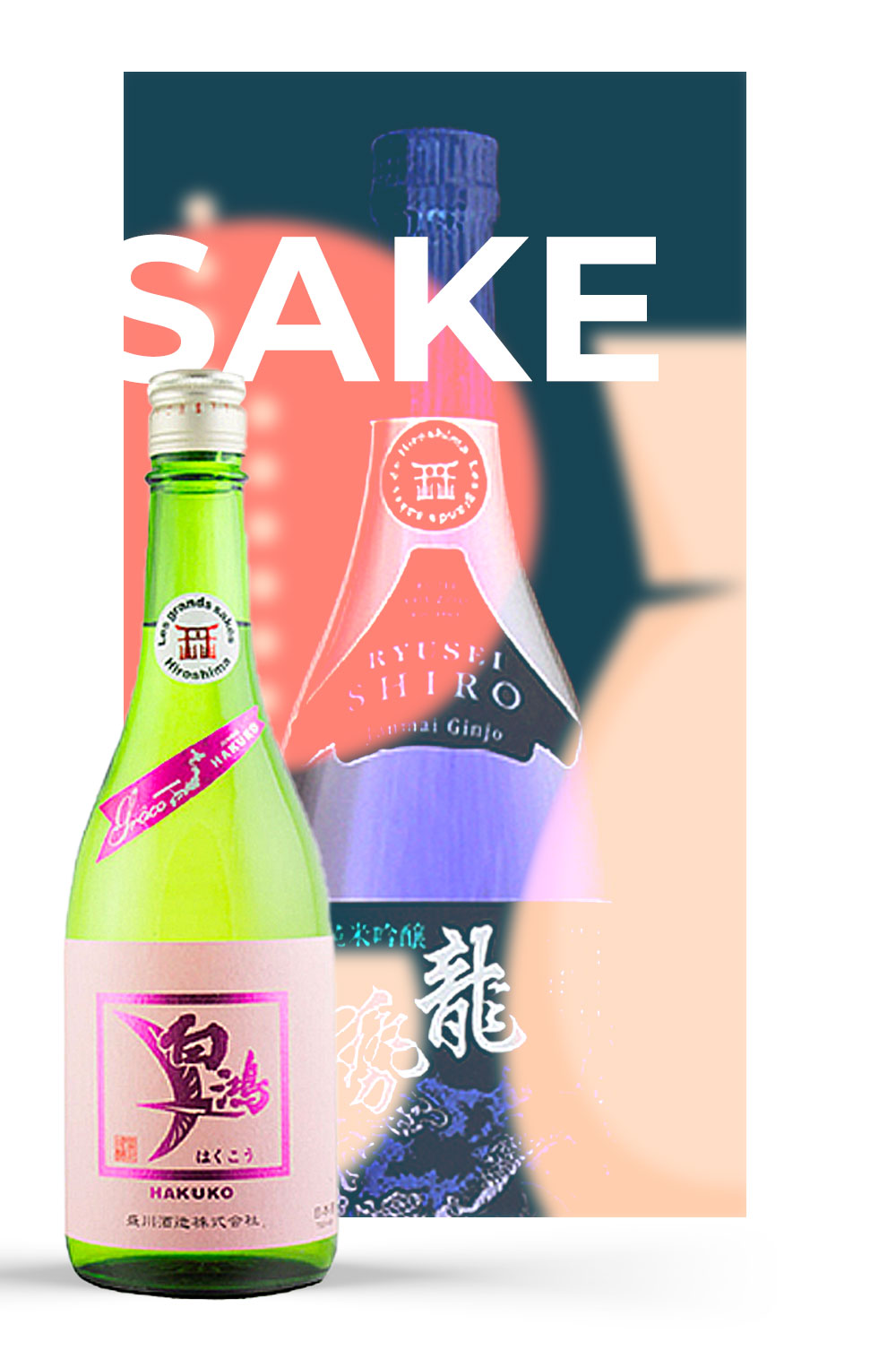
The sake production process is complex, involving several stages from ingredient selection to bottling. Do you know how this delicious “Japanese wine” is born? To better understand its production, let’s divide it into two parts: ingredient preparation and actual production.
Ingredient Preparation:
Water: It’s hard to believe that water quality has a decisive influence on sake taste. But it’s true! It’s the soft water of the region that gives Hiroshima sake its unique character.
Rice: There are many varieties of rice – currently, there are no less than 270 cultivated in Japan. They are divided between commonly consumed rice and rice specifically used for sake, chosen according to various criteria such as grain resistance, size, and starch crystal concentration – what we call the “white heart” of rice. Yamada Nishiki is currently the most valued (and used) variety by sake producers.
Koji-Kin: A fungus called Aspergillus Oryzae is used to convert rice starch into simple sugars. Did you know that the (large) Aspergillus family was discovered in antiquity in China and has since been used to produce alcoholic beverages like sake, but also miso and soy sauce?
Yeast: Yeast is responsible for fermenting rice sugar into alcohol and also defines specific sake aromas.
Sake Production:
Rice Preparation: At the base of sake is whole rice that is polished in a fairly long process (from several hours to several days), resulting in a lighter but more starch-rich grain. The percentage indicated on labels is that of the mass remaining after polishing, washing, and soaking the rice. After polishing, the rice rests for several weeks until the soaking step where the rice mass will increase by about 30%. This step is timed to the second because if the rice absorbs too much water, it can become too soft and unable to create koji, the base of the “rice mash,” necessary for creating sake! Next, the rice is steamed for about 60 minutes and divided into two categories: one that will be used for fermentation and one that will make up the koji.
Koji Preparation: According to the artisan method, part of the rice is taken to a special room and spread by hand, sprinkled with koji-kin, wrapped in cloth, and left to rest – to allow the Aspergillus spores to grow and multiply. Shubo: Before moving on to alcoholic fermentation, it is necessary to create the mash (called shubo or moto in Japanese). This is composed of koji, cooked rice, water, and often selected yeast and lactic acids. To stimulate the development of these microelements, sake artisans distribute the preparation in large vats and mix it with wooden sticks – a particularly arduous task.
Fermentation: The koji, shubo, cooked rice, and water ingredients are added to fermentation tanks in several batches over several weeks. During this period, yeast ferments rice sugar into alcohol. Some producers choose to replace some of the water with… sake! The beverage produced in this manner is called “kijoshu” sake.
Post-Fermentation: Sake is pressed, filtered, and pasteurized. Then it is stored in large tanks where it matures – usually between spring and autumn. Before bottling, water is added, except for Genshu sake which is bottled as is. This is because after pressing, sake has about 20% alcohol and we want to obtain a lower alcohol content.
Finally, after all this process, sake is ready to be tasted. There are many terms and concepts in this wonderful world of sake. If you want to learn more about Hiroshima sake production, click here.
Discover here the selection of sakes that Vinha has to offer!

